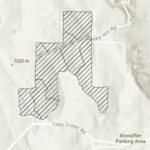Home »

The Case of the Reluctant Bomb Aimer
By Elinor Florence
This Remembrance Day, I will remember Edmund Kluczny, a farm boy from northern Alberta who served as a bomber pilot with RAF 90 Squadron in World War Two. After the war he became a teacher in Alberta and eventually retired to Invermere, where he won numerous speed walking medals in the B.C. Seniors Games. He led an active life right up until 2013, when he died peacefully at the age of 91 years.
 A few months before his death in 2013, I interviewed him about his 35 raids over enemy territory. He gave me a copy of a story he had written himself, called The Case of the Reluctant Bomb Aimer, about an incident that happened when he was the pilot of a Lancaster crew flying regular bombing raids over enemy territory.
A few months before his death in 2013, I interviewed him about his 35 raids over enemy territory. He gave me a copy of a story he had written himself, called The Case of the Reluctant Bomb Aimer, about an incident that happened when he was the pilot of a Lancaster crew flying regular bombing raids over enemy territory.
The Case of the Reluctant Bomb Aimer – Written By Ed Kluczny
“I won’t go! I’m not going!”
I was horrified when I heard my bomb aimer’s outburst. Tonight’s target would take us deep into Germany’s heavily-defended industrial area. I needed my crew inside their Lancaster and ready for takeoff, but the bomb aimer was refusing to get on board. This was a problem that I needed to solve, and fast.
My bomb aimer Johnny was a big, good-looking kid from Winnipeg, a bit vain about the social standing that his “wings” brought him. But, as his skipper, I had already experienced John’s problem. In a serious situation, he was inclined to panic. As we left the briefing hut, he told me he wasn’t joining tonight’s operation. Then he charged down the path alone.
This would be our third mission and the first two had been anything but a “piece of cake.” The sheer terror of those first two trips was causing a reaction from Johnny that needed to be dealt with, if we were to do our jobs – or even hope to survive. I hoped he would think it over and come to his senses.
Later, at the mess, there was no sign of Johnny. Maybe he was in the wet canteen, looking for some liquid courage. No, that was out. The canteen wasn’t open at this time of day. He must have gone straight to our hut, maybe to take a nap.
From the mess it was a short walk through a wheat field to our hut. When I arrived, the hut was empty. I dug out the sweater I intended to wear from my kit bag, and sat down to transfer the briefing details to a chart, to orient myself on tonight’s route.
By this time the hut was filling up as the crew arrived. They were openly discussing the hazards of tonight’s operation. But where was Johnny?
I didn’t tell the rest of the crew about Johnny’s outburst, but it was no use trying to turn the discussion to anything else but tonight’s trip. We were all too “full of it.” Probably they noticed Johnny’s absence, but nobody was making a point of it.

Finally it was time for our shuttle out to the plane. Armourers were loading bombs into the Lancaster’s open bomb bays. Johnny’s job was to check the arming of the bombs after they were all loaded. We were not carrying the massive blockbuster tonight, but smaller bombs, backed up with incendiaries.
The bomb aimer’s role was crucial. He was the one who aimed and pressed the button that released the bombs over the target. But where was he?
As skipper, I was responsible for having the crew ready for tonight’s action and we couldn’t head out one man short. The rest of us completed our pre-flight checkups and the clock crept towards takeoff time. It was now too late to look for him, and anyway, where would I look?

There were no phones out on the field. Information was distributed by the omnipresent Tannoy – the stationwide intercom – with loudspeakers scattered around the station. Finally I dashed for the nearest transmitter, trying to compose a message that would reach Johnny without alerting the authorities.
“Sergeant Johnny! Sergeant Johnny! Report at once to V for Victor. We have a problem and we need your solution NOW!” Only Johnny and the rest of the crew would understand my words.
Johnny heard the message, and it worked.
It appealed to his better instincts – to his close relationship to the crew, and possibly even to his vanity. It sparked the realization that we depended on him and needed him. That he was a vital part of our crew, just as was every other member.
In a few minutes he came rushing up to our dispersal, still dragging on bits of his flying gear. One crisis overcome. But no time for recriminations. Straight to the pre-flight checks. I even ordered a few re-checks just to keep everyone busy and without giving them any opportunity to confront Johnny with his tardiness.

In a few minutes, we were taxiing out, up and away to Stuttgart, Germany. We had to keep a close watch for other aircraft of our own, and when we reached the coast of Europe, enemy fighters.
I soon had Johnny down into his position in the nose of the aircraft, manning the forward guns. I kept calling on him to help our navigation by reading the map.
Once again, the flak proved to be vicious and obscene, but thankfully the enemy fighters were busy with other targets. We managed to dodge both the flak and the searchlights. I kept us busy so that the wrenching, numbing fear welling up from our guts only got high enough to make our hearts pound, but didn’t make it as far as our brains.

After an eternity of this, the navigator announced we were minutes from our assigned target. His words were confirmed by the buffeting we were feeling from the flak bursts, but at least we had made it this far with four mighty Merlin engines still performing their power symphony.
Then both Johnny and the mid-upper gunner spotted our target, which was marked with Pathfinder flares. At this point, Johnny took over the “navigation.”
Hunched over his bomb-sight, he guided our approach with directions: “Port . . . port . . . straighten out . . . a touch to starboard . . . now, straight and level!”
The endless few seconds from “Straight and level” to “Bombs away!” were always a nightmare for me, because there was nothing I could do to avoid danger without jeopardizing the success of our operation.
Finally, it came: “Bombs Away! Let’s get the hell out of here!”
And we did! Fortunately we made it back to base safely.

That trip was the last one in which I had to deal with panic in the crew. The next morning, Johnny was up early and down to the intelligence section, where he had made the acquaintance of a couple of girls who worked there, assessing the aerial photographs. Girls, I hasten to add, who were often higher-ranking officers than the men.
They showed the “blow-up” target photo from last night. It was the third in a string of five photos taken on every bombing run, triggered by the bomb release. If the bomb-sight and the plane were accurately aimed, the photos showed where the bombs landed.
The girls arranged the photographs in something called a “photo ladder.” The photos showing bombs landing farthest away from the target were on the bottom, and the closer you got, the higher up the ladder your photos were placed.
Lo and behold, our enlarged print was a BULLSEYE!
It was the best bomb placement of any aircraft in the squadron, placed on top of the display for all to see and admire!
All the credit went to Johnny. He never demonstrated any panic again.
* * * * *

Edmund was born in Empress, Alberta to a homesteading family. After graduating from high school in 1938, he began cooking at a forestry camp at Buck Lake before becoming a Second World War pilot. Before leaving for overseas, at the tender age of 20 years, he married his sweetheart Maxine.
He successfully flew thirty-five missions and earned the nickname “Captain Cool” among his crew for keeping a level head in the most dangerous situations. He received the Distinguished Flying Cross for his efforts.
In the lead image he is standing in the centre of his crew, the one with the moustache. You can easily see the “bomb aimer’s blister” on the nose of the aircraft.
 After the war, Edmund ran the Buck Lake general store before studying at the University of Alberta to become a teacher. He taught school in the Edmonton area until he moved to the Columbia Valley in the late 1970s. Edmund competed in speed walking and won numerous medals with the B.C. Seniors Games from 1989 until 2012.
After the war, Edmund ran the Buck Lake general store before studying at the University of Alberta to become a teacher. He taught school in the Edmonton area until he moved to the Columbia Valley in the late 1970s. Edmund competed in speed walking and won numerous medals with the B.C. Seniors Games from 1989 until 2012.
In 1997, Ed travelled to Walsall, England and located one surviving member of his crew, wireless operator Tony Anson. The two enjoyed an emotional reunion.
A few years ago, Ed visited the Lancaster bomber at the Bomber Command Museum in Nanton, Alberta, where he sat in the cockpit one last time.
Below, he is behind the cockpit in wartime, and in Nanton 53 years later.
* * * * *
Author Appearance at Cranbrook Public Library
 Elinor Florence of Invermere, is the author of a dramatic new wartime novel called Bird’s Eye View, the only novel ever written featuring a Canadian woman in uniform as the main character. Her heroine Rose joins the Royal Canadian Air Force, goes overseas to England, and becomes an interpreter of aerial photographs.
Elinor Florence of Invermere, is the author of a dramatic new wartime novel called Bird’s Eye View, the only novel ever written featuring a Canadian woman in uniform as the main character. Her heroine Rose joins the Royal Canadian Air Force, goes overseas to England, and becomes an interpreter of aerial photographs.
Elinor will present a highly-entertaining slide show of vintage photographs and explain the research behind her novel at the Cranbrook Public Library, 7 p.m. Monday, November 16. After the event she will sell and sign copies of her book.








